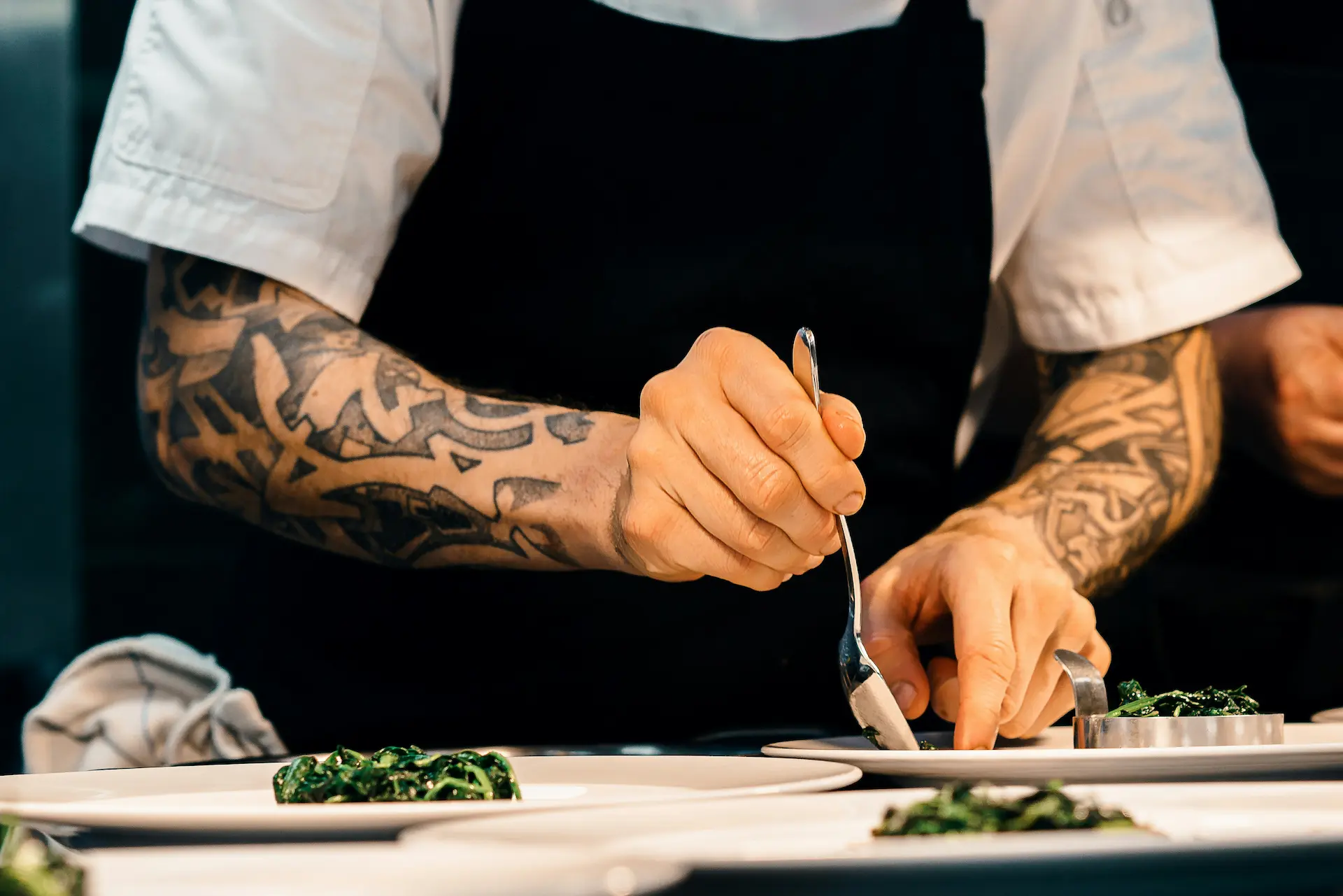
The power of tablets and pads to enhance the guest experience
In the world of dining, where each dish is a masterpiece and every service is a performance, the way we take orders can transform a simple visit into a memorable experience. Revolutionize order taking in your restaurant with the power of tablets and pads! As customers' expectations for speed and quality rise, these digital tools have become the "conductors" of the culinary experience.
Offering an intuitive and interactive interface, tablets allow restaurant owners to serve their customers efficiently while maintaining warm and authentic contact. Digitalization is not just a gimmick; it’s a genuine secret recipe for boosting customer satisfaction and optimizing operations. Ready to blend innovation and tradition to make your establishment shine?
Challenges of traditional systems
Using traditional systems in restaurant order taking has shown increasingly problematic limitations, impacting both operational efficiency and guest experience.
Errors and Dissatisfaction
Transcription errors in orders, often due to illegible handwritten notes or misunderstandings, can lead to disappointing experiences for guests. These errors not only frustrate guests but also compromise their loyalty to the establishment. According to a study by the National Restaurant Association, about 60% of customers say a bad order can deter them from returning to a restaurant, highlighting the importance of accurate and effective order taking.
Overload and Delays
During peak hours, manual order-taking methods can extend wait times, negatively affecting the efficiency of a full house. Waiters struggle to manage orders while offering quality service. A study by Toast indicates that 70% of restaurateurs find that service slowdowns during peak hours directly impact their revenue, as guests prefer to avoid long waits.
Advantages of tablets for order taking
Integrating tablets into restaurant order taking offers a host of significant benefits, ranging from improved operational efficiency to an enriched customer experience.
Increased efficiency and error reduction
Switching to tablets accelerates the transfer of orders from the dining area to the kitchen, significantly reducing errors caused by illegible handwritten notes or forgotten orders. This results in greater order accuracy, increased service fluidity, and reduced wait times for customers.
Improved service speed
Tablets save precious time in the order-taking process. Servers can record orders faster and send them instantly to the kitchen. According to a study by Toast POS, restaurants equipped with tablets have observed an increase in service speed of nearly 20%.
Direct communication
Tablets enable direct communication between servers and the kitchen by sending orders instantly without intermediate steps. This method avoids transcription errors that can occur with manual order taking. A Toast study found that using tablets reduces order errors by 27%, providing customers with a more accurate and satisfying experience, thereby promoting their loyalty.
Time saving
For additional insights into optimizing operations through digital systems in the restaurant industry, consider that in the UK, 84% of hospitality businesses report difficulties in recruiting staff, according to recent industry research. This challenge highlights the importance of streamlining operational processes to alleviate labor shortages, which can be effectively addressed with digital solutions like online ordering systems and in-house tablets.
Visual menus
Visual interfaces on tablets greatly enhance customers' perception of dishes. With high-quality images and detailed descriptions, customers are more engaged in the selection process and more inclined to try new dishes. According to a study by L'Hôtellerie Restauration, digitalization of menus can lead to a 15% increase in sales for certain dishes. By making the ordering experience more interactive, restaurants can whet customers' appetites and encourage bolder choices.
Multilingual and accessibility
Offering menus in multiple languages is a major asset, especially for establishments in tourist areas. This allows tourists and expatriates to easily navigate the local culinary offerings, enhancing their appreciation of the dishes. A report indicates that 50% of tourists prefer to visit restaurants that offer information in their native language. This highlights the importance of linguistic accessibility to attract a diverse clientele, which can increase foot traffic and revenue in restaurants.
Up-selling opportunities
Tablets provide an ideal platform for incorporating personalized recommendations. By offering suggestions based on previous customer choices or popular dishes, restaurants can encourage customers to expand their orders. Zenchef has revealed that some users who integrated tablets have observed a 15% increase in their average ticket. This increase is not only due to better exposure to dishes but also stems from more engaging interaction with customers. A study by Harvard Business Review highlights that personalized recommendations can influence up to 30% of consumers' purchasing decisions.
Resource optimization
The adoption of digital technologies enables significant resource savings. By reducing the reliance on printed menus, restaurants can cut down substantially on paper and printing costs. This approach is both cost-effective and highlights an ecological commitment, a value increasingly valued by consumers. According to a recent report, 68% of UK consumers are willing to pay more for brands that demonstrate environmental responsibility.
Best practices for integrating tablets and pads
Ongoing training and staff feedback
Successfully integrating new technologies relies on adequate training and constructive feedback:
- Learning Environment: Organize initial training sessions with regular updates to keep staff informed of the latest software improvements and features. This ensures a smooth adoption process for all tools.
- Collecting Feedback: Encourage employees to share their experiences with the new technology. Their insights can provide valuable information for improving the system and tailoring training to real on-the-ground needs.
Software selection and implementation
- Simplicity and Consistency: A user-friendly, intuitive interface that can be widely adopted fosters rapid and consistent team adoption.
- Flexibility and Easy Integration: Ensure that new software is compatible with existing systems, allowing for a seamless and smooth transition.
Progressive transition strategies
- Pilot Deployment: Start by introducing new technologies in a specific area or section of the restaurant to assess their impact and refine implementation before a full-scale rollout. This approach has been highlighted in case studies of various restaurants that have successfully undergone digital transformations.
- Cross-Integration: Gradually integrate new features and tools, ensuring that the transition is smooth and consistent across the establishment. This strategy minimizes disruption and maximizes staff acceptance.
Data collection and personalization
Digitalization facilitates the collection and analysis of customer behavior, enabling more personalized service:
- Identifying Preferences: By analyzing order data, restaurateurs can identify purchasing trends and adjust their offerings to better meet customer expectations.
- Tailored Offers: The data collected enables the creation of personalized offers, strengthening customer relationships through customized interactions.
Connected ordering solutions: Toward mobility and autonomy
The power of QR codes
- Contactless Ordering: QR codes make digital menus easily accessible, simplifying the ordering process, enhancing customer experience, and minimizing physical interactions.
- Enhanced Payment Options: With ZenchefPay, the payment process is fast, secure, and contact-free, adding a further layer of digital evolution to the customer journey.
Click & collect and delivery integrations
- Integrated management: A platform like Zenchef centralizes reservation, order, and delivery management, reducing operational complexity and ensuring service consistency.
- Expanding customer base: Delivery solutions allow restaurants to reach a broader customer base without immediately increasing physical capacity, creating new revenue opportunities.
Reducing physical interactions
- Hygiene assurance: Allowing customers to access information and order autonomously addresses increasing hygiene concerns.
Case studies: Successful digital transformation
"The innovative kitchen"
The integration of tablets into modern kitchens has transformed operations, enabling faster and more accurate order processing while minimizing errors. For instance, The Cornerstone Pub in London implemented digital management tools that streamlined both customer service and kitchen workflows, leading to enhanced efficiency and an improved overall dining experience.
- Turnover increase: This efficiency has boosted table turnover rates by 25%, resulting in notable revenue growth.
"The digital bistro"
With interactive ordering solutions and a Click & Collect system, digitally-equipped bistros today expand their customer base and attract new visitors through an improved digital presence. For example, The Green Bean Café in Manchester integrated digital ordering tools and a Click & Collect system, which boosted revenue within the first year of digital adoption and enhanced operational efficiency.
Tech trends and the future of restaurant digitalization The restaurant industry is at a turning point, with technological innovation opening new avenues for customer service:
- AI integration: Artificial intelligence is beginning to play a critical role in restaurant management, optimizing everything from stock forecasting to staff scheduling.
- Augmented reality: Augmented reality now allows immersive visualization of dishes, enhancing the customer experience and boosting sales.
- Digital sustainability: As the carbon footprint becomes a global concern, digitalization also contributes to waste reduction, a value increasingly appreciated by eco-conscious consumers.
The digital transition poses specific challenges. Here are some recommendations to ensure effective implementation:
- Preliminary planning: Conduct a thorough assessment of internal needs and customer expectations to identify potential opportunities and challenges.
- Choosing technology partners: Work with reliable technology providers who offer not only innovative solutions but also ongoing support and training for a smooth transition.
- Communicating the change: Ensure full transparency with your staff and customers. Explain the benefits of the new technology to gain their buy-in and address any concerns.
- Cultivating a culture of innovation: Foster a corporate culture where innovation is valued and where employees feel free to share ideas for continuous improvement.
Boost your operational efficiency: Zenchef offers innovative solutions that optimize daily restaurant operations while enhancing the customer experience. -> [Free demo here].














.webp)

.webp)



















.webp)











